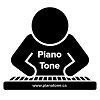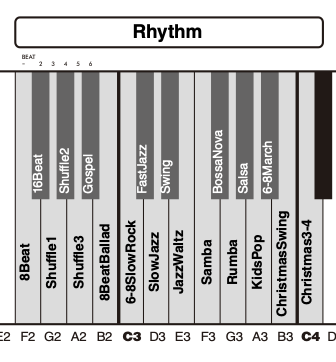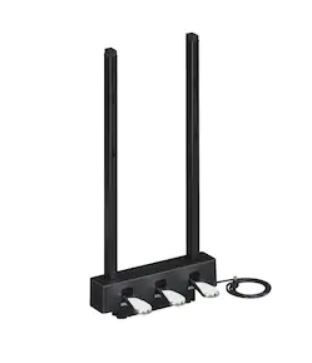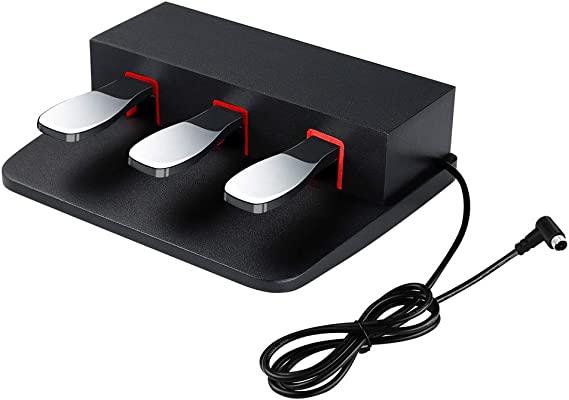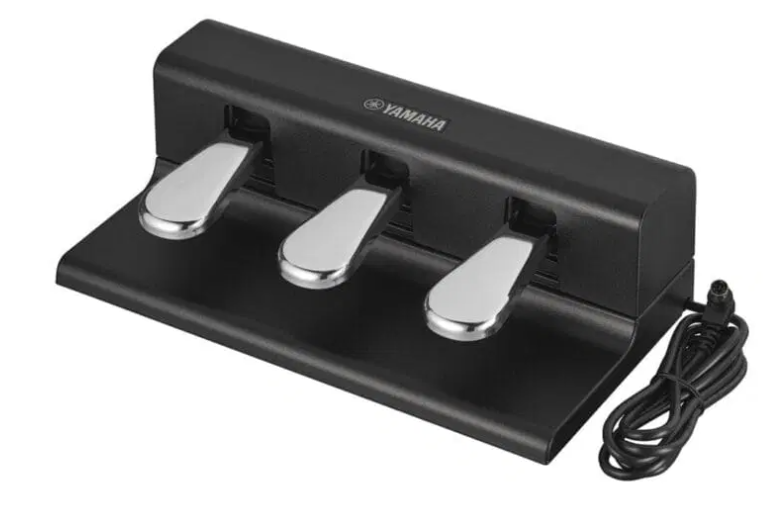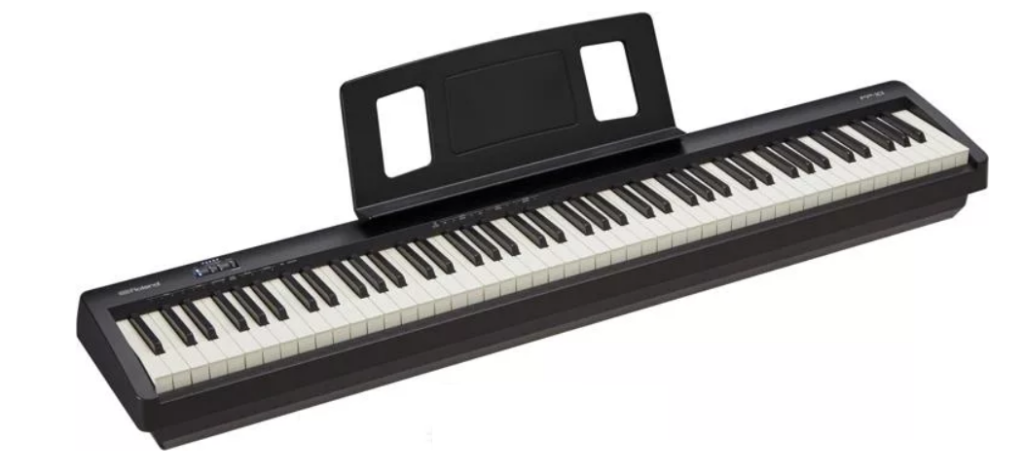This is my review on the long awaited replacement for the Yamaha P-125, which has been one of the most popular (if not THE most popular) portable digital piano in the world for a few years now, and for good reason. I’ve owned a P-125 on a couple of occasions, and it’s definitely one of my favorite digital pianos ever. The new version of this piano is the Yamaha P-225 which was released in 2023, and has finally become available in my area so I rented one from my local Long & McQuade store so I could do this review. You can check out Long & Mcquade at www.long-mcquade.com. Now I have a lot of experience with the P-125, so I will be drawing quite a few comparisons during this review to the older model; I won’t bother talking about the short lived Yamaha P-125a; as I mentioned in a few videos, that piano was a SIGNIFICANT downgrade from the P-125; it’s exactly the same instrument except Yamaha removed the built in audio interface. Ok so with all that out of the way, let’s get on with the review.
Feature Summary
So to quickly sum up what you get with the Yamaha P-225:
- Yamaha’s new GHC (“Graded Hammer Compact”) action: fully weighted & graded dual sensor hammer action
- 192 notes of polyphony
- 24 sounds, most notably including upgraded piano sounds from the Yamaha CFX Grand engine, with VRM Lite (Virtual Resonance Modeling)
- 20 rhythms with optional piano player “friendly” bass player accompaniment
- Pretty much every type of connectivity you would need, including LR line outs, Bluetooth audio in for streaming, generic sustain pedal port, triple pedal port AND an audio interface built into the USB to host port which is a huge feature
- Same super simple (but functional and intuitive) button driven user interface from the P-125
- Reduced dimensions and weight from the P-125
- Sound boost, Intelligent Acoustic Control, Wall EQ options
- Fully compatible with the free Yamaha Smart Pianist app
Key Action
So probably the biggest change from the P-125 – the action. The P-225 has a new action, the GHC which stands for “Graded Hammer Compact”. Like the prior GHS action, this is a dual sensor, fully weighted and graded hammer action (so the keys on the left are heavier than the keys on the right, just like on an acoustic piano).
So I’ve always been a HUGE fan of the P-125’s GHS action, it’s actually my personal favorite piano action ever; it’s on my Yamaha DGX-670 as well as my Yamaha CK88 stage piano that I use with my band, and I love it on both. Yamaha actually surprised me by moving towards a more compact action with this piano; I was fully expecting the P-125’s replacement to move more towards Roland’s PHA4 triple sensor action by coming out with their own triple sensor action, but instead Yamaha has moved more towards Casio’s Smart Scaled Hammer action from their Privia line, by developing their own version of a more “compact” action. One of the common criticisms of shorter “compact” actions comes from those actions requiring a shorter “pivot point” which can make the keys harder to play further into the keys. All digital pianos do suffer from this to some degree, but shorter pivot points will have more of that issue, it’s just plain physics. Whether you notice it (or care about it) much is a personal preference.
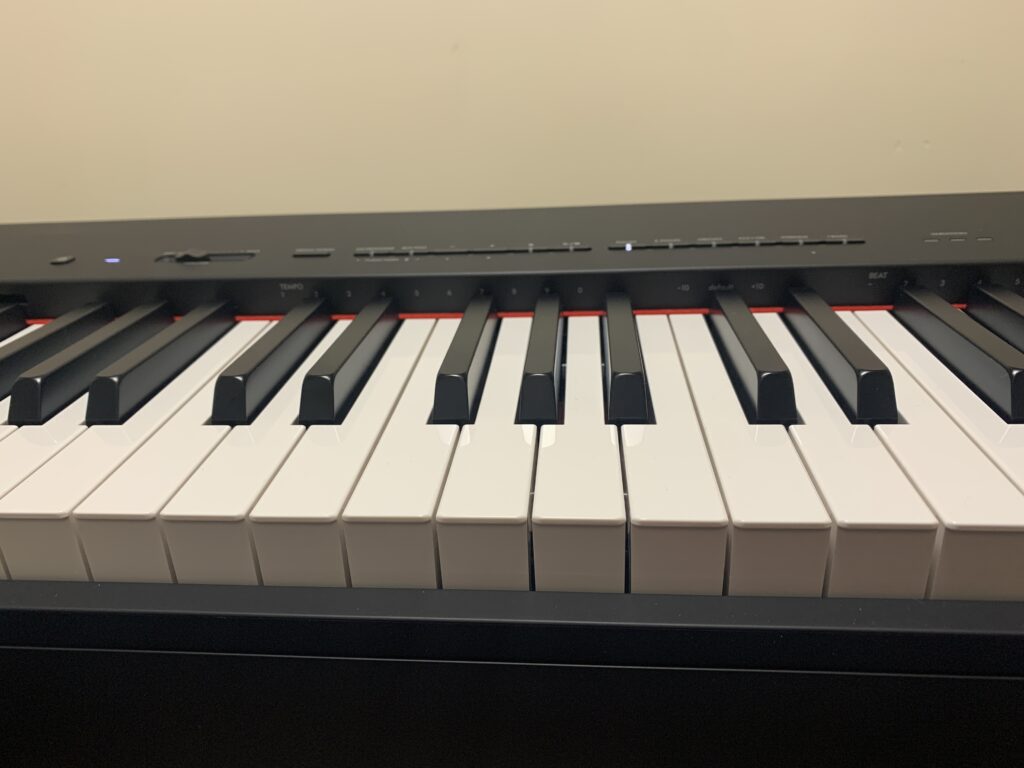
So before even talking about how this new action feels, it has made the P-225 a tiny bit more portable with a reduction in weight of about a pound, and some smaller dimensions; the P-225 is 23 mm, so almost an inch narrower than the P-125 was. And I’m not sure if it’s the new action that is contributing to a height reduction, but the P-225 is significantly shorter than the P-125 was, coming in at over an inch shorter. So while a reduction in size and bulk is always a good thing; I was just hoping that Yamaha didn’t compromise the quality of the action just to . . . save an inch in depth, which at the end of the day; is that inch really that big a deal? Well, when I finally got a chance to play the P-225 in store, and now having rented it and spent more time with the GHC action, I’m pretty relieved to say that this action feels great.
It does feel a little different than the GHS, but not worse, and probably not really BETTER; just different. As far as any weight discrepancies playing further into the keys? Well it is definitely heavier as you move up the keys, but is it noticeably different from the GHS action I’m used to? I mean I’m not a classical pianist, I’m still a relative beginner who … pounds on chords, but I did get a chance to test playing further into the keys side by side with a P-125 in store, and I didn’t notice any difference in that regard. A couple of differences I DO notice are: it feels to be a tiny bit shallower than the GHS (so the GHC doesn’t seem to travel down as far as the GHS); I did try to measure this compared to my DGX-670 and my CK88 though, and to be honest when I did? I DIDN’T see any difference in the key travel; but it FEELS like there is.
The GHC also might offer SLIGHTLY more resistance than the GHS (but that could just be because I’m playing a brand new unit). The most noticeable difference though is that it feels a bit. . . stronger , or more “solid” feeling. And by that I mean that the keys don’t have any significant side to side play or movement like you’ll find on cheaper pianos (you can do a glissando on the P-225 and you won’t hear keys smacking into each other AT ALL); it just feels REALLY well built and sturdy. The P-125 actually felt strong and sturdy as well, when compared to the Casio Privia action which I do like, but the Casio action is much “looser” feeling. So this new action on the P-225 is taking that well built solid and sturdy feel a step further, so . . . I think that’s a good thing. And keep in mind, that the case that an action is within can also affect how “sturdy” it feels; if you were to blindfold me and have me try this action out and guess what piano I’m playing? My first guess probably would have been a DGX-670. And that’s because the DGX-670 is in SUCH a heavy and sturdy case, that the GHS action on the DGX has always felt sturdier to me than the GHS on the P-125 or my CK88; so whether the GHC feels like this from the action itself or as a combination of the action and any changes to the case design; either way . . . it feels really good . Like the GHS, it is a bit on the light side, and feels fast and easy to play, but still sturdy which I really like. As far as the feeling of a shallower key travel goes, I did find that a bit unfamiliar at first, given that I’m SO used to the GHS action, but if I owned a P-225 I don’t think it would take long for me to get used to it. So my verdict on the new GHC action? I really like it, and a lot of that is because I’ve always been a huge fan of the GHS, and the new action does provide a very similar playing experience. Now action is a very personal thing, so if you DIDN’T like the action on the P-125? Then you probably won’t like the P-225’s action either, but like I always say the only way to tell if you’re going to like an action or not is to go and test it out in person.
Sounds
OK so the next big thing to talk about is the sounds. Like it’s predecessor, the P-225 has 192 notes of polyphony, and just like the P-125, the P-225 has 24 sounds, and the sound NAMES are identical between the 2 models. But the acoustic piano voices have been SIGNIFICANTLY upgraded from the P-125; to be honest though, I didn’t notice a difference with any of the other voices, so I’m not sure if they have been upgraded or not, but; they were all really good already.

So we have 4 pianos, 4 electric pianos, 4 organs, 4 clv/vib/others, 4 strings/pads and 4 basses. One thing I should mention, is that there is also a Yamaha P-223, that from what I can tell is only being marketed in certain parts of the world, and as far as I can tell, appears to be identical to the P-225, but the P-223 has replaced the vibraphone and clavichord sounds with an accordion and a “Guzheng” which is an Asian plucked instrument I’ve personally never heard of.
But anyways, back to the P-225, the piano voices on the prior P-125 used the Pure CF sound engine which includes samples of the Yamaha CFIIIS Grand piano, and they are some great piano samples, but the P-225 includes the Yamaha CFX Grand samples, which . . . from owning a Yamaha DGX-670 and Yamaha CK88 that also have the CFX samples, I can tell you right off the bat that this is a big upgrade over the P-125. And the P-225 also offers Virtual Resonance Modeling, which will add additional nuances on the fly as you play, depending on HOW you play – it will replicate additional resonances that you would hear on an acoustic piano. My DGX-670 has VRM as well, but my CK88 does not; and for pure piano pieces, you can definitely tell the difference.
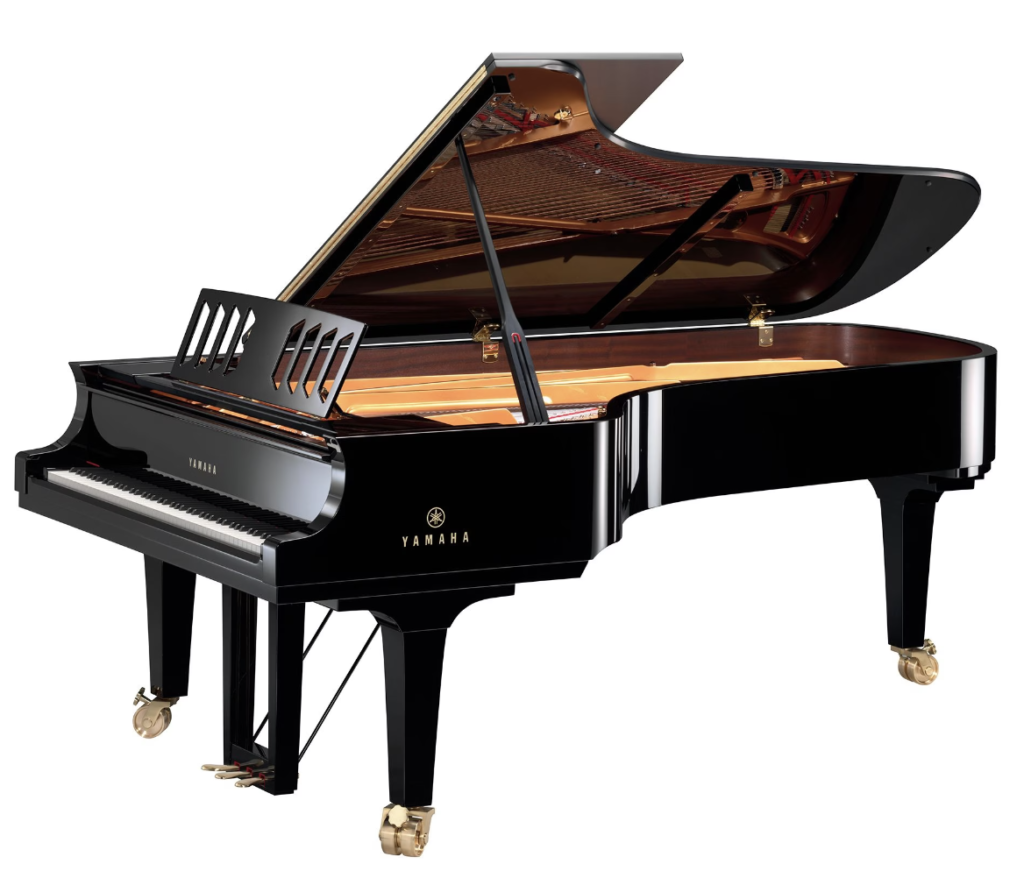
The P-125 did offer some basic resonance and other features such as string resonance and key off samples, but nothing like the P-225 does. So as I mentioned earlier, I didn’t hear any significant differences in the NON piano voices, and it’s not super clear in Yamaha’s documentation or promotional material what changes or upgrades may (or may not) have happened with these on the P-225, but given that there are only 24 sounds, I will demo all of them in the video below so you can check them out for yourself; I was always a big fan of the Rhodes electric piano sound on the P-125, so I’m hoping that either hasn’t changed or has been enhanced.
OK so what did you think of the voices on the 225? Even though there aren’t a TON of voices to choose from, I’ve always really liked the voice selection Yamaha has included on this series; pretty much every type of voice you’re ever likely to need is there, and they are all really well done. I really like the electric pianos, the Rhodes has that same awesome growl that the P-125 Rhodes had, and the strings & pads sound fantastic layered with the piano (Yamaha has always done a better job of that than the competition; strings always have just the right decay on them – with the competition, layered strings almost ALWAYS grow in volume and overpower the piano). And the same awesome bass voices are still there as well.
So with a great bread and butter set of sounds to choose from, and with the new CFX Grand piano samples on the P-225, this is a fantastic set of voices.
User Interface
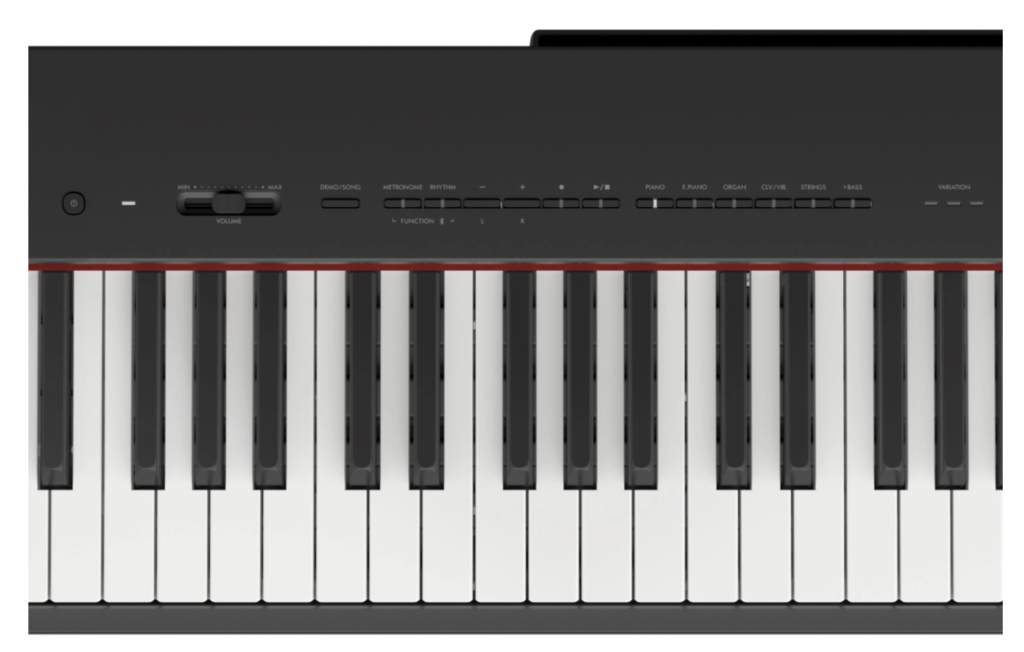
So the user interface on the P-125 was always one of my favourites, and the P-225 user interface is for all intents and purposes – EXACTLY the same. It is SUPER simple to use; there are buttons for each voice category that you can use to quickly select any of the 4 voice variations within that category, and unlike similarly priced pianos from Roland and Casio, you can actually SEE what your currently selected voice is just by glancing at the panel. I’ve always been super critical of the Roland FP-30X because for a piano that is 25% MORE expensive than the P-225, you have to memorize and use key combinations to select voices (which to me is just ridiculous), AND you have no idea from looking at the front panel what sound you currently have selected; I would never buy an FP-30X for this reason alone.
As with the P-125 though, there are still other settings that you unfortunately DO still have to use key combinations for. I don’t mind this TOO much for things that aren’t common, that you don’t typically need to set “on the fly”, but I was hoping that Yamaha would have added JUST A COUPLE more panel buttons to reduce this need for COMMON settings, which would make the P-225 that much more usable as a gigging instrument. In particular, for balancing relative volumes between layers, for choosing rhythm types, and for turning the accompaniment bass on and off; these are all things that it would be nice to be able to do quickly and easily from some panel buttons; it even would have been nice if Yamaha could have included labels above the keys for these functions instead of devoting almost all of their labelled keys to the metronome . . . which is something I never use, but more than that, the metronome isn’t something you need to set “on the fly”.
But, since the most important part of a user interface is being able to quickly and easily select voices, and be able to see what your current voices are? The P-225 still slaughters most competing pianos in its price range (like the Roland FP-10 or Casio PX-S1100), and also slaughters the UI on some more expensive pianos like the Roland FP-30X. And, the P-225 is compatible with Yamaha’s Smart Pianist app, which adds a fantastic graphical user interface to EASILY control ALL the settings on the P-225, and this app also adds some significant functionality to the P-225 – I’ll go over Smart Pianist a bit later in the review.
Effects
For effects, the P-225 has the same 4 types of reverb from the P-125: Recital Hall, Concert Hall, Chamber & Club (or you can just turn reverb off if you want) and you can adjust the level of your chosen reverb quite a bit. It also has a “wall EQ” setting; given that the big speakers are backwards facing on the P-225, this option will adjust the speaker EQ if you have the piano up against a wall.
There is a “Stereophonic Optimizer” effect which IS enabled by default; this is intended to provide a more realistic playing experience when using headphones. The idea here is that headphone speakers are too close to your ears to provide a “piano room like . . . spacious experience”; so with this effect on, you should be hearing a more natural “sound distance”, and it supposedly isn’t as hard on your ears. I can’t really demonstrate this in a video, but I can say that when I turn this on and off, I do hear a difference . As far as describing the difference, that’s not easy but I think there might be a very subtle mild bit of panning going on and maybe some super mild adjustments to the attack of the notes so it’s not QUITE as harsh in your ear. Once again, it’s super subtle, but I do think it sounds a bit better in headphones when this feature is on than when it is off.
There is also an “Intelligent Acoustic Control” feature which is also enabled by default; this is intended to adjust the sound quality based on the overall volume of the instrument, making sure low and high sounds are audible regardless of the overall instrument volume. To be honest I’ve turned this on and off and tested it a bunch, and if there is a significant difference, then my ears definitely aren’t experienced enough to hear it, but . . . the piano does sound awesome so I’m sure it’s enhancing the sound somehow.
Then, we have a “sound boost” option with 2 types: speaker and output. This is intended to “boost” the piano sound either out of the speakers, or out of the audio outs (so the line outs, headphones or USB audio out). This is especially useful in my opinion with the USB audio out, so when you’re sending audio to a device like a phone to make a piano video ; I’ve found with other keyboards that this volume is often pretty quiet, so an extra volume boost here is pretty useful.
Rhythms & Accompaniment
I have always been a HUGE fan of how Yamaha implemented the rhythms and accompaniment on the P-125, so I am actually quite thrilled that they didn’t change this feature at ALL on the P-225. There are 20 rhythms to choose from, and you can choose whether to included a count-in & quick fill intro, a short fill outro, and bass accompaniment. So while you don’t have all the fancy features you find on arranger keyboards like variations, fills, more backing instruments and different chord fingering modes, the way the accompaniment is implemented on the P-225 is very piano player centric; I love it.
And what I mean by “piano player centric” is that unlike an arranger keyboard where you’re usually using your left hand to control what chords the accompaniment is playing, which means you don’t actually HEAR THE NOTES your left hand is playing, on the P-225, you DO hear what your left hand is playing; the P-225 is going to use the entire range of the keyboard to detect what you’re playing and as such, what notes the bass player should be using to accompany you. And what makes this work SO well, is that the bass lines are kept VERY simple; on some rhythms, the bass player may limit their play to just the root note or the octave of whatever chord it detects; there are a few other rhythms where you’ll often hear a 5th as well. By keeping it mostly to the 1st and 5th, the bass accompaniment will “work” with pretty much any type of chord; major, minor, 7th etc. For example, if I’m on the 8Beat rhythm, the bass sticks to the root note. On the 16 beat rhythm, you’ll hear the root note and a quick 5th being added in below. One of the few rhythms that gets more complicated with the bass is the FastJazz rhythm; if I hold down a C major on this one, you’ll hear the root, 6th, 5th and the major 3rd in this bass line (no surprise a jazz rhythm can benefit from a busier bass line). So when I noticed the major 3rd being included I immediately tested what happens if I switch to a C minor chord; and, good job Yamaha, when I do that you no longer hear the major 3rd as part of the bassline.
So once again, super happy with how Yamaha implemented a simple but super useful rhythm and accompaniment feature, and since they totally got it right on the P-125? I’m glad they kept it the same on the P-225. It’s SUPER useful for practicing (way more fun and useful than a metronome) and you could in a pinch use this in a performance situation if you were busking, playing alone or just with a singer or acoustic guitarist etc.
Connectivity
OK for connectivity, the P-225 has everything the P-125 had, PLUS something extra. And this is going to be all the connectivity you could need. There are 2 headphone ports on the front, both 1/4” ports; they are kind of strangely hard to get at, hidden under a kind of a lip; I’m assuming this is Yamaha being concerned about the looks of the piano; I’d personally prefer it if the ports were a bit easier to get at, but . . . it’s not that bad.
The ports on the back are also a bit hard to get at, also hidden under a lip; we have proper left and right line out ports for connecting to external audio equipment like amps, PA systems, mixers or audio interfaces. And like the P-125, if you only use the L port you will get a mono signal that is a “summed” left and right; if you use both ports then you will get the left signal out of one port and the right out of the other.
Then we have a 1/4” generic sustain pedal port as well as a port for a triple pedal unit. The P-225 comes with the usual plastic brick switch pedal; you definitely should be upgrading to either a generic sustain pedal with a polarity switch, or even better Yamaha’s FC4A pedal which supports half pedaling. Or if you want to get a triple pedal, you actually have more options now.
There is the usual LP-1 triple pedal unit that Yamaha has been selling for years, that supports half pedaling, but the knock on this one has always been that it requires you to get the Yamaha stand for your piano, because the pedal unit attaches to the stand. I had an LP-1 for my DGX-670 and I didn’t like it much; I found it really stiff and a bit high off the ground, so I took it back and got a 3rd party triple pedal made by DAOK which you can get off Amazon; it’s far more portable, doesn’t require a Yamaha stand, and it works great with my DGX-670. I actually did do a review on the DAOK pedal HERE; and I did test it with the P-225 and it works great. But Yamaha has FINALLY taken notice of all the people who didn’t want the LP-1 pedal, many of whom were buying the DAOK like I did; and they’ve AT LAST come out with a portable triple pedal unit, the FC35 which DOESN’T require the stand, so that’s another option for you. I haven’t seen one of these yet, once they’re available in my local store I’ll rent one for a quick review.
Then we also have a USB to host port to connect to a device like a phone, iPad, tablet or pc; and just like the P-125 (but NOT the P-125a) this port not only transmits MIDI, but it also transmits AUDIO which is a HUGE feature. This allows you to send a clean high quality digital audio stream to use in a recording app on a device; you can record the P-225’s audio in a DAW app like GarageBand, or you can even connect your P-225 to an iPhone, and use the default camera app on the phone (or Yamaha’s free Rec’N’Share app which I will talk about later in the review) to record a high quality piano video; the app will use the direct audio signal from the P-225 instead of its built in mic.
Now the other advantage that the built in audio interface offers is that it sends audio in BOTH directions; so if you want to use your P-225 to send MIDI data to a sound bank app on a device, the sounds that app generates will come STRAIGHT back through the same connection to the P-225’s headphones, speakers and line outs, and WITHOUT any lag. On keyboards without a built in audio interface, you only hear the app’s sounds from the audio output of the device you’re running the app on, so in this case, my iPad’s headphone port; the only way in that situation to hear those sounds out of the piano would be if the piano had an aux in port, but that usually results in some delay or lag. So with this awesome bit of functionality, you can add pretty much endless new sounds to your inventory.
So all of the above functionality was available with the P-125 as well, but there’s one BIG addition, and that is Bluetooth Audio in. With the P-225, you can stream audio wirelessly into the piano from any Bluetooth device, so now you can easily stream in backing tracks, play along with Youtube videos, or listen to your online piano lessons through your headphones or speakers without needing any extra external equipment.
Speakers
So the speakers are one of the bigger changes between the P-125 and the P-225. The P-225 has the same wattage output as the P-125 with 7 watts per side for a total of 14 watts, but the big difference is the direction the speakers face. The P-225 has 2 speakers that face out the back of the piano, and are vented out the front through a couple of slots, creating a 2 way, very 3-D sounding experience. In contrast, the P-125’s speakers face upwards towards the player. If I get the chance to rent a P-125 for a side by side comparison I will definitely do a speaker comparison, but as far as how the P-225 speakers sound? They sound pretty awesome, especially given the size; they’re definitely loud enough for home practice, and you could probably get away without external amplification if you were playing a smaller intimate place like a cafe, especially since the speakers would be facing the audience. As far as the speaker placement goes, I’ve usually been fine with either upward or backward facing speakers, but to be honest I have NEVER been a fan of downward facing speakers; the theory with downward facing speakers is the sound bounces off the floor etc, but to be honest I’ve never been very impressed with the downward facing speakers on any piano, including the Roland FP-30X, and also my Yamaha CK88’s downward facing speakers; I can’t even hear those in my band practices; I really wish Yamaha had faced the CK88’s out the back or towards the player. The speakers on the the P-225 totally blow away the speakers on my CK88. So here’s a quick demo of the speakers on the P-225, just as picked up by the built in mic on my iPhone. I will also include a quick demo of the speaker Sound Boost, as well as the “Wall EQ” setting to see if you can hear the difference.
Other Features
For other features, there are built in songs you can play along with, and if you’re using the Smart Pianist app, you can see the scores for those on your device as you play along (I’ll be going over the app in a bit). I’ve never been a huge fan of built in songs, so I’m not going to bother demoing that, but they are there if that is something that interests you.
For recording, there is a nice and simple onboard recorder built in, you can only record one song, but you can include rhythms if you want, so this is a nice and simple way to quickly capture an idea.
And there is of course a metronome that you can adjust the tempo of and configure for various time signatures.
And like the P-125, there is also an option to split the keyboard into two identical octaves on each side, intended for sitting with a piano teacher. If you like, you can even configure the left side keys to only come out of the left speaker, and right side out of the right speaker.
Apps
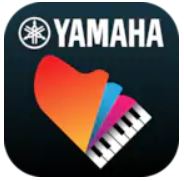
Smart Pianist:
So the P-225, like the P-125 is compatible with Yamaha’s amazing FREE app Smart Pianist. As I mentioned in the user interface section of the review, this app adds an awesome graphical user interface to help easily control ALL the settings on your P-225.
In addition to providing a graphical UI for controlling piano settings, Smart Pianist also has some pretty cool built in tools, such as being able to analyze an audio file and create a chord chart for you that you can play along with, and even transpose, as well as the ability to display notation for MIDI files and allow you to play along with built in MIDI songs, or your own MIDI recordings.
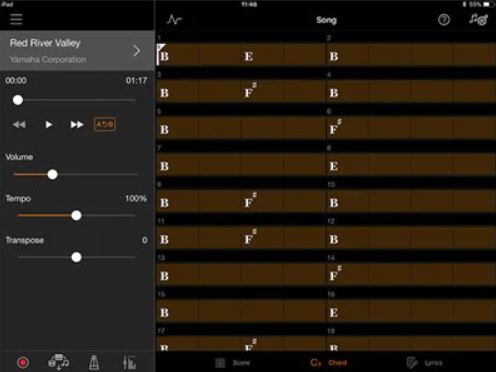
So that’s all great, but the Smart Pianist app also ADDS some pretty significant functionality to your P-225, such as REGISTRATION MEMORY. You can easily save as many custom setups of voice, effects, layering and rhythm configurations as you like for quick and easy recall so that is HUGE.
The app also significantly enhances the recording functionality; instead of just being able to record ONE song using the 225’s onboard recording functionality, you can record as many songs as you like, and you can choose to record in audio format OR in MIDI format. And with either format, you can take advantage of those built in tools to display chord charts for audio tracks or notation for MIDI tracks, so . . . SUPER cool.
So yes, Roland and Casio also have apps to help control their pianos, but . . . there is absolutely NO comparison between those apps and Yamaha’s; the Smart Pianist app has WAY more features, is WAY easier to use and is way more stable & dependable than either the Roland or Casio apps are.
If I have time, I might try to do an updated review on Smart Pianist with the P-225, but the functionality is pretty much identical to what was available on the P-125, and I have already done a review with the P-125 & Smart Pianist on my channel.
But either way, if you go ahead with a P-225; I’d highly recommend checking out Smart Pianist.
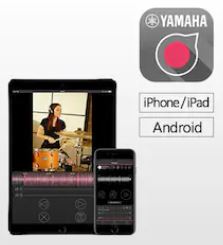
Yamaha Rec’N’Share
So I mentioned earlier that since the P-225 has a built in audio interface, you can easily record a performance video with high quality direct audio just with your iPhone’s built in camera app; the app will use the direct audio signal coming from the piano instead of it’s built in mic. While you can definitely just do this with your default camera app, you can also choose to use Yamaha’s Rec’N’Share app which is a free app that is custom made for recording and sharing piano performance videos, so it has some extra features that you might prefer over your default camera app. I actually did a video on the Rec’N’Share app if you want to check that out on my channel.
What’s Missing / Could Be Improved?
There’s VERY little missing from the P-225; but if I could have everything I wanted, what would I have liked to have seen included? One thing I would have LOVED to have seen is a 1/4” mic input port with gain and some basic reverb; Yamaha included that with the PSR-E473 and PSR-EW425 keyboards, and for someone looking for a budget gigging instrument (which the P-225 is definitely qualified as) that would be a MASSIVE feature.
The only other thing I wish Yamaha had done was just tweak the user interface a TINY bit to make it easier to adjust 2 settings that would really help a gigging musician who doesn’t have time to memorize or look up key combinations: one would be a set of buttons just like the voice buttons to allow you to select rhythms by category and variation (and see what current rhythm is selected), and a slider to quickly adjust the relative volume between layered voices. But . . . you can’t have everything, and these features would definitely bump up the price of the piano.
The Competition
So while I know that prices between all the piano manufacturers can vary pretty wildly in different markets around the world, where I am, in my opinion, there is absolutely NOTHING that even comes CLOSE to the Yamaha P-225; I was REALLY surprised when the 225 came out that it didn’t jump in price at ALL from the $750USD price of the 125, whereas other manufacturers more recent releases, have seen some major price jumps.
So, competition from Casio?
You have the PX-S1100 and the PX-S3100; I’ve owned both of these for a short while and reviewed both of them; they are great keyboards, and while I do like the sounds and the action on these, I still much prefer the Yamaha sounds and action, and:
- The 1100 is a bit less expensive but has a terrible user interface, requiring key combinations for selecting sounds, and has no built in USB audio interface
- The 3100 is a bit more expensive and has a menu system and more rhythms & accompaniment features, but once again no built in USB audio interface
And competition from Roland?
You have the FP-10 and the FP-30X. I’ve reviewed both of these and I owned an FP-30 (which was the FP-30X’s predecessor) for a few months. These are REALLY popular keyboards, and they do have great piano sounds, and they have the triple sensor PHA4 action that SOME people absolutely love, and some people (like me) DON’T like. But aside from the sounds and action (which are both personal preferences ; in my opinion the piano sounds from the P-125 are comparable with the Rolands, but the P-225’s CFX samples, in my opinion, push the Yamaha past the Rolands):
- The Roland FP-10 is once again a bit less expensive than the P-225, but it suffers from the same poor user interface as the Casio PX-S1100, requiring key combinations to do EVERYTHING including selecting voices, and it also has no built in audio interface, nor does it have any rhythms, and doesn’t even have left and right line out port
- So what about the Roland FP-30X? I actually did a shootout video between the P-125 and the FP-30X where I even ranked the P-125 higher than the Roland, so to me, with the improved voices on the P-225? There really is no comparison here, the P-225 TOTALLY outshines the FP-30X in my opinion; while the action and the sounds are totally a personal preference , the lack of a decent user interface and onboard rhythms on the FP-30X (not to mention a VASTLY inferior app), have me recommending the P-225 in a big way . Another thing to mention here though, is that it’s becoming harder to compare the FP-30X to other pianos lately, because the FP-30X is one of those pianos that seems to vary wildly in price depending where you are. Where I live, the FP-30X is 25% MORE EXPENSIVE than the P-225, which to me is totally crazy. Yet in the USA, the FP-30X seems to have dropped in price to the same as the P-225; on Black Friday sales in the US, I even saw the FP-30X on sale for LESS than the P-225! I have a suspicion as to why the price of the FP-30X MIGHT be dropping; and that is because of the new Roland FP-E50; as I mentioned in my review on the FP-E50, I don’t know why any Roland fans would choose an FP-30X anymore because the FP-E50 is a far superior product and value.
Yamaha P-225 – The Verdict
So, what’s the verdict on the Yamaha P-225?
So if you’ve watched this whole review, you probably already know what my verdict is on the P-225; this piano is awesome ; it is totally a worthwhile successor to the P-125, and I cannot recommend it highly enough. Yamaha really knocked it out of the park with the P-125, so I think they made the right decision in just upgrading the P-225 in some key areas, as opposed to any major redesigns.
They retained all the awesome features that made the P-125 one of the most popular pianos in the world:
- the super simple but functional user interface
- the really well done piano player centric rhythm and bass accompaniment features
- the built in USB audio interface
- the left and right line out ports
- compatibility with the Smart Pianist App
And then they made some key enhancements:
- upgrading the piano voices to the CFX Grand with Virtual Resonance Modeling
- adding bluetooth audio in
- a reduction in dimensions and weight with their new GHC action, without sacrificing the awesome feel and playability made famous by the GHS
And they somehow managed to make all this happen without a big price increase so . . . hats off to Yamaha, the P-225 is an awesome value.
So that’s pretty much it for this review; as always, I have links in the description below to products I’ve mentioned here so you can check out current prices in your area, as well as some links to other relevant reviews of mine, and also some links to online piano training that worked for me that I highly recommend. So thanks again for stopping by, and happy piano shopping!
Thanks so much, and happy piano playing! (and piano shopping 😉 )
Links To Check Out Current Pricing:
(please note that as an affiliate I earn from qualifying purchases)
Yamaha LP-1 Triple Pedal (Requires Stand)
Yamaha FC3A Pedal (Half Pedaling)
Piano Training I Recommend
I’ve taken a number of online piano courses; the ones I’m listing here are my favorites and I can highly recommend any of these if you are looking for some online training to get started on learning piano, or to take your current skills to the next level.
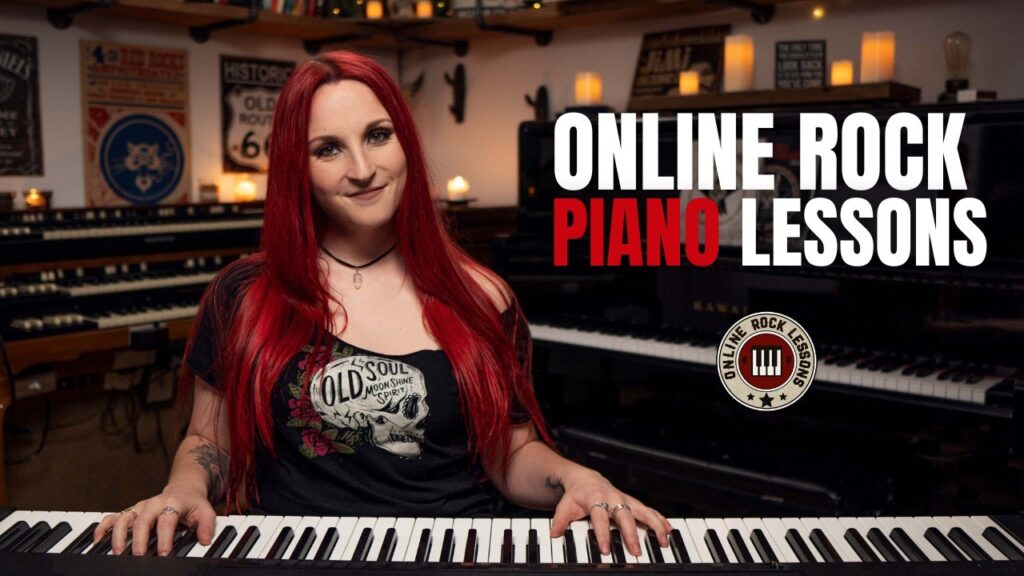
This is a fantastic option if you are mostly interested in rock music (and if you’re interested in Hammond organ!) This course was created and is taught by Marine Lacoste, who is not only a fantastic instructor & pianist, but she is also a very accomplished hammond organ player – she performs regularly with her own band, as well as playing keys regularly for multiple recording artists on tour. I started this course in 2023 when I joined a band, and it is helping me greatly in taking my playing to a new level!
If you sign up for Online Rock Lessons yearly subscription, use code PIANOTONE at checkout to let Marine know I referred you, and she will give you a free 20 minute orientation call!
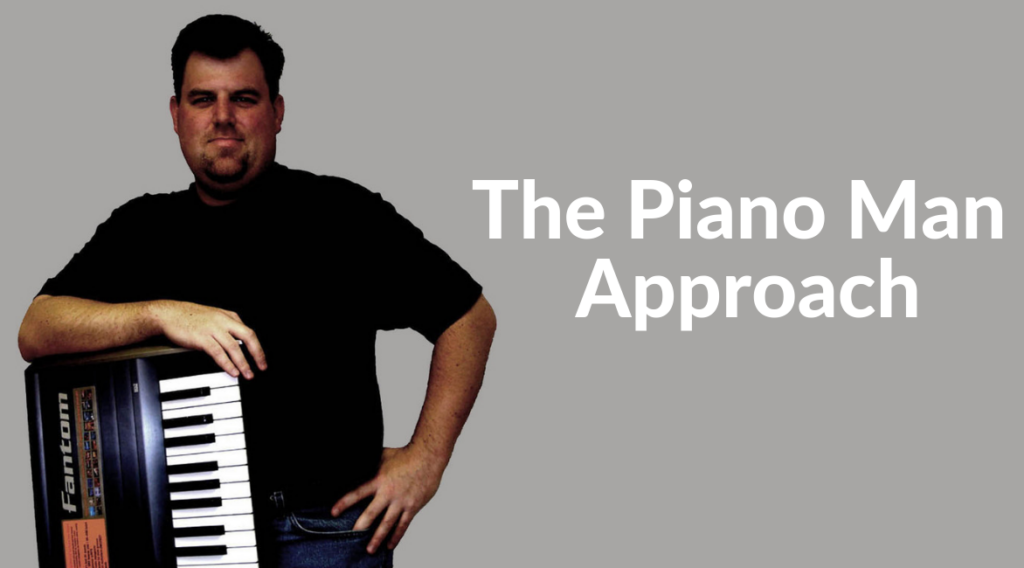
This course is an amazing option for learning piano from beginner up to being able to perform; it teaches multiple genres of music and focuses on how to be a “one person band” on the piano. This course is taught by pro pianist Steve Lungrin – Steve has been teaching and performing his whole adult life and is a fantastic instructor and performer.
I took this course from 2020 to 2021 and it elevated my playing from a very basic level to being able to play songs in multiple genres.
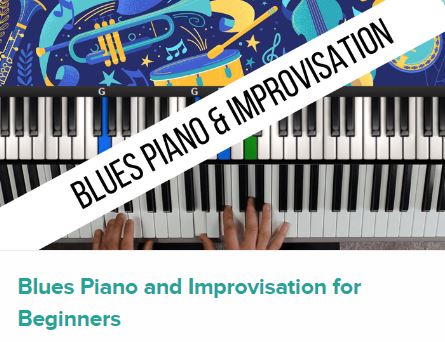
Bird’s Piano Academy (Beginner Blues):
If you like the blues, and (or) want to ramp up your improv/soloing abilities on the piano, this is a GREAT course. It’s taught by Arthur Bird, who has a number of courses available on blues, jazz, as well as just getting started on piano. I found his beginner blues & improv course in 2022 when I “hit a wall” in my soloing abilities, and it really helped my improv and soloing in a big way.

If you’re looking for the least expensive way to get started on piano, Pianoforall is a great option. It’s a unique course created by Robin Hall that uses downloadable eBooks with embedded videos and audio instead of a website.
